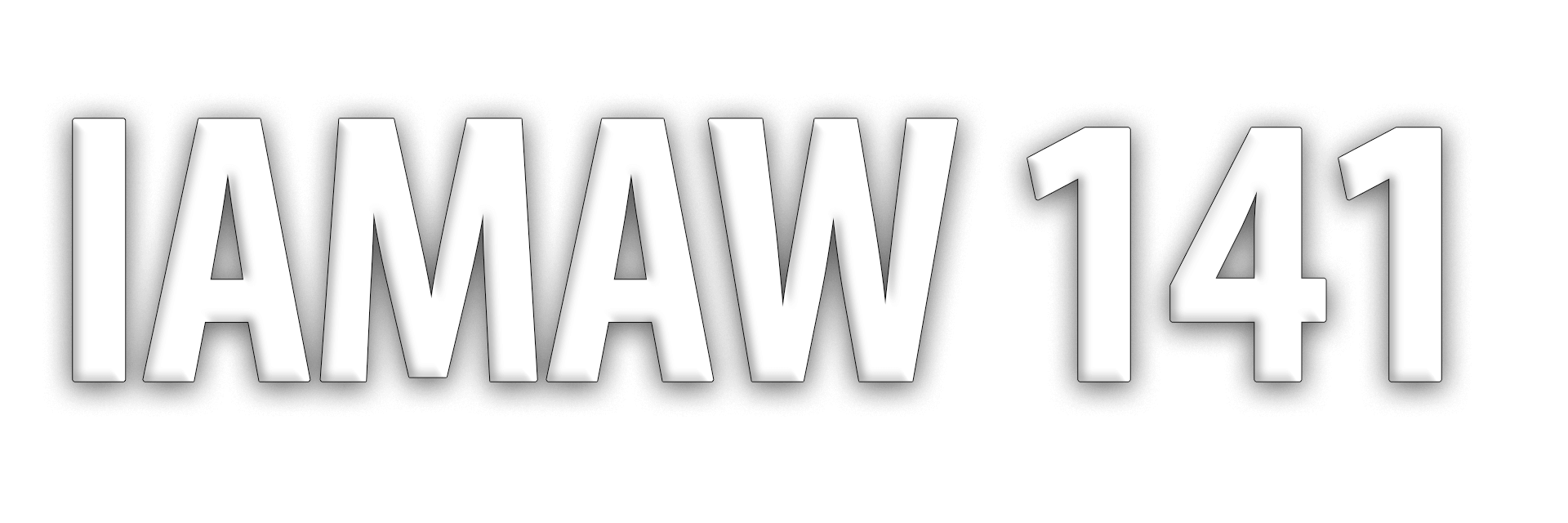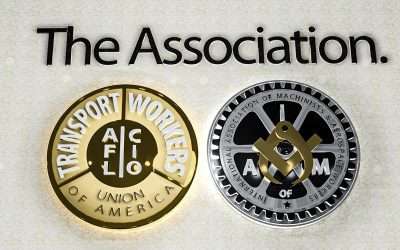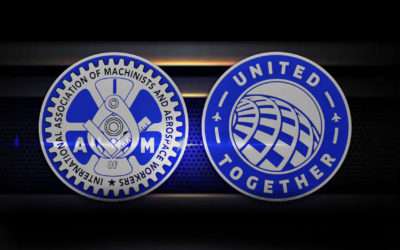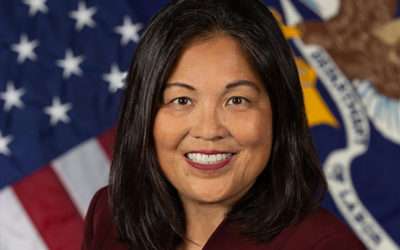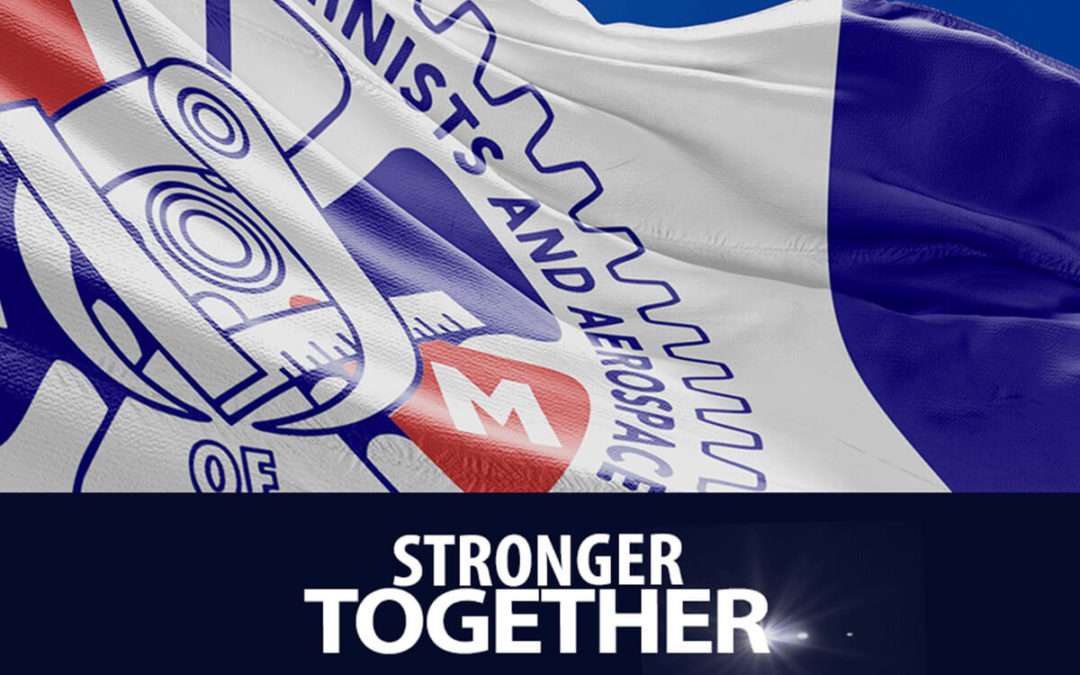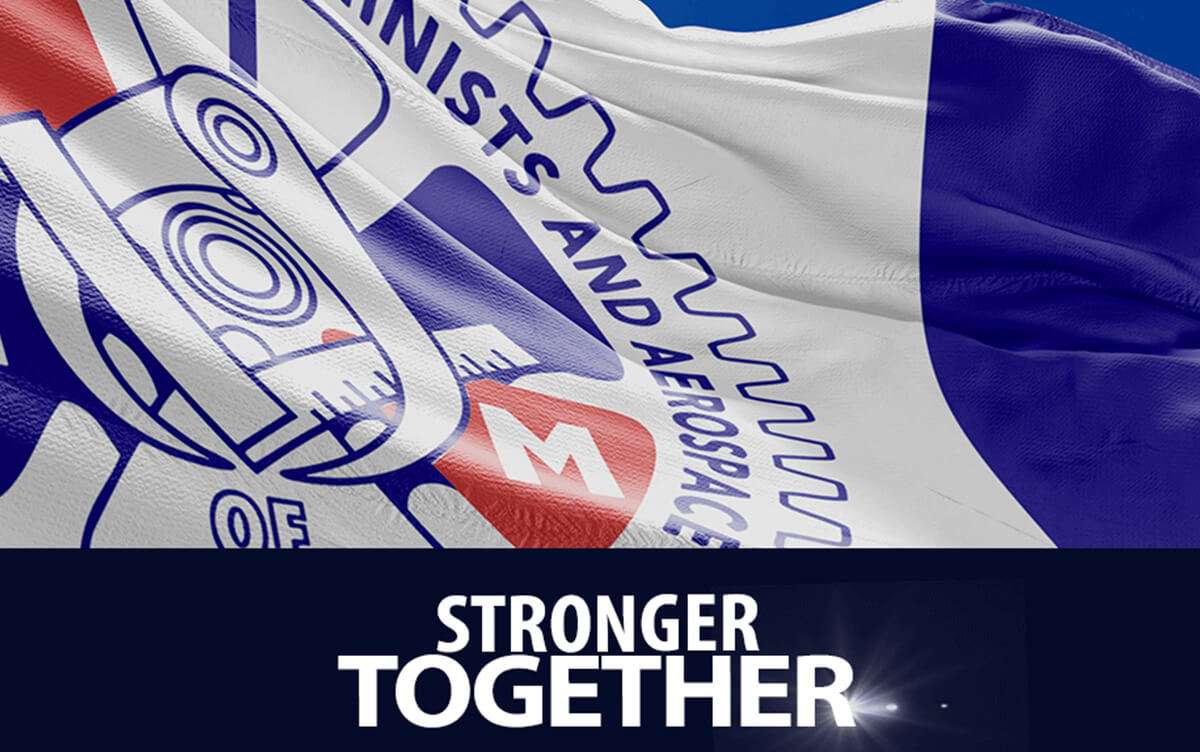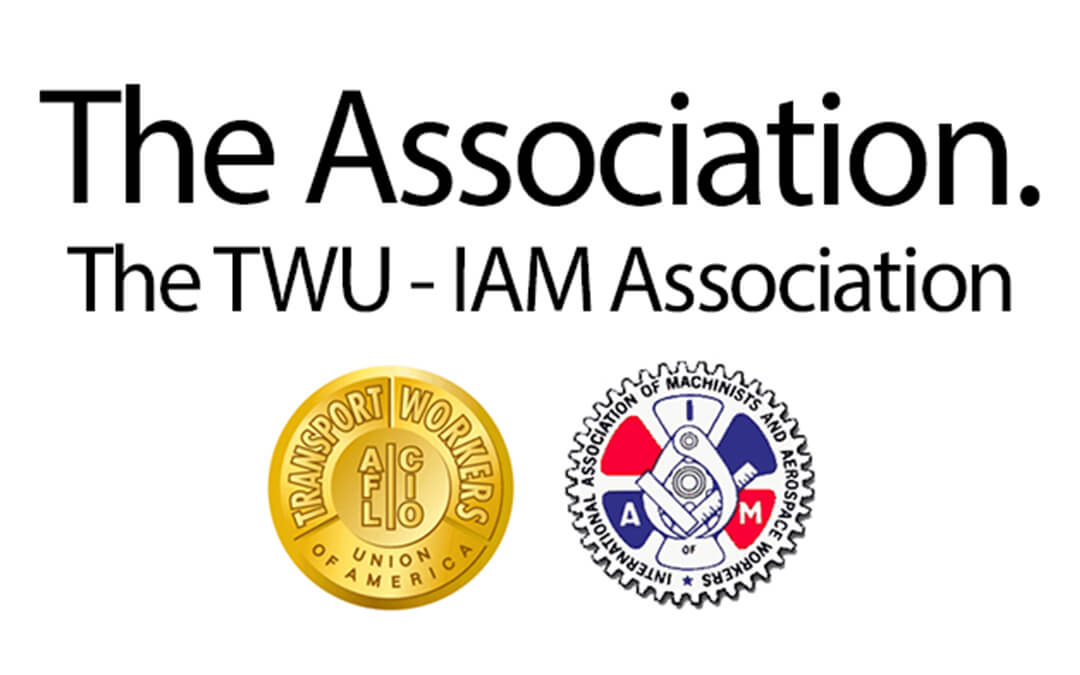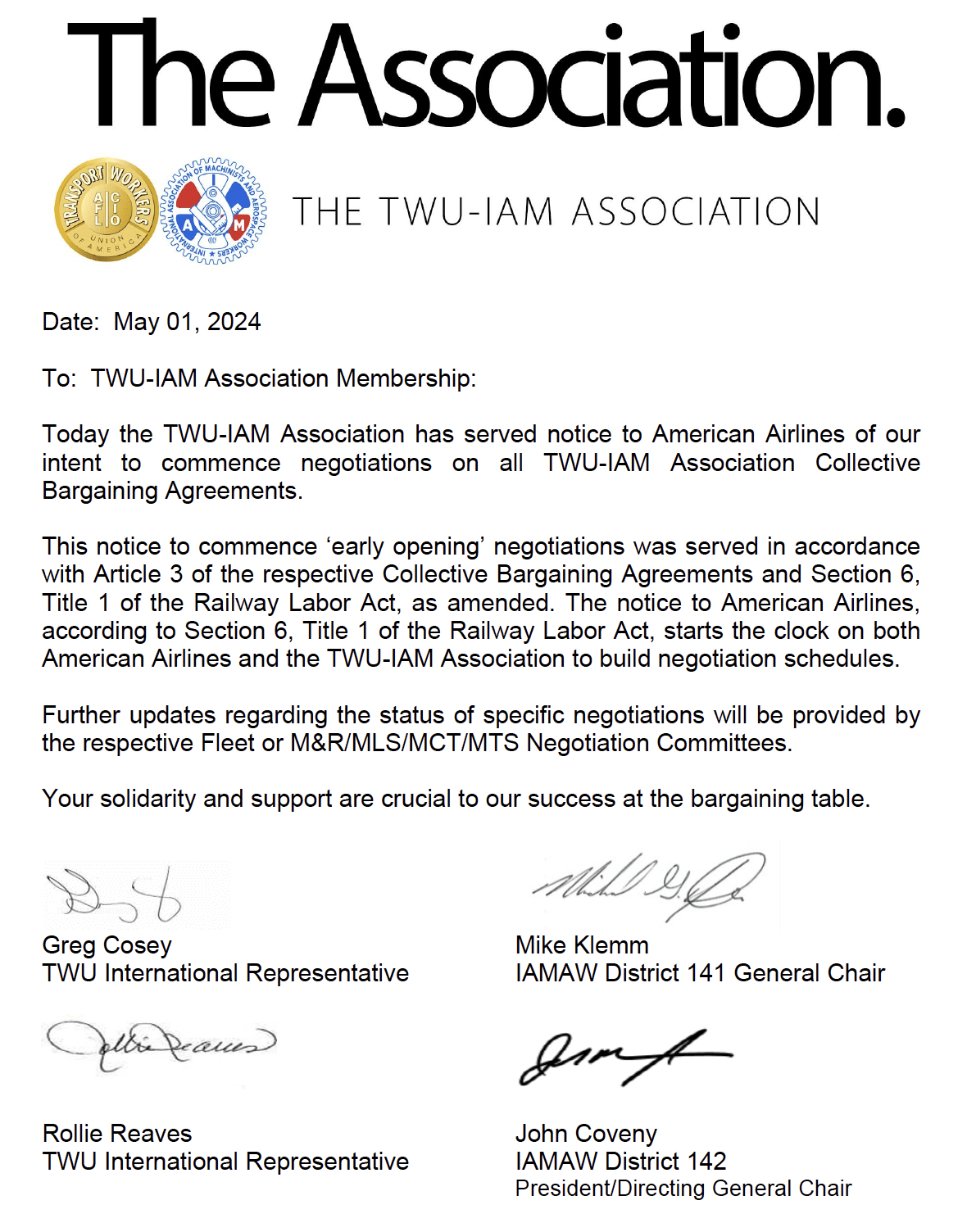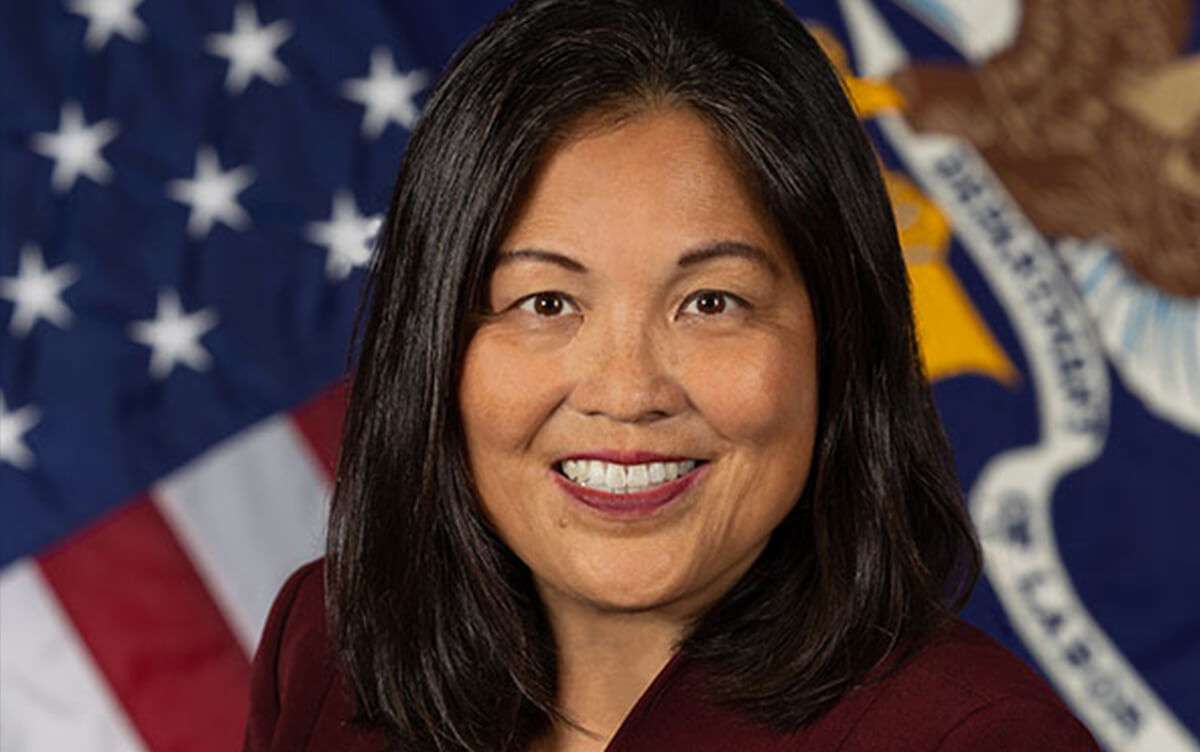To all Fleet Service Association Members employed at American Airlines:We are contractually permitted to begin Section 6 Negotiations with American Airlines in September of this year. In preparation for those negotiations, we will be surveying all Association Members...

Machinists Union Applauds the Passage of the FAA Reauthorization Bill
Machinists Union Applauds the Passage of the FAA Reauthorization Bill

Machinists Union Applauds the Passage of the FAA Reauthorization Bill
WASHINGTON — The Securing Growth and Robust Leadership in American Aviation Act, H.R. 3935, reauthorizes the Federal Aviation Administration (FAA) through 2028. This comprehensive bill, led by Representative Sam Graves (R-MO), covers airport planning, development, facilities, equipment, and operations. Key provisions include increasing air traffic controller hiring targets, creating a workforce development program for aviation professionals, and enhancing protections for airline workers. The bill has attracted widespread bipartisan support, reflecting its critical importance to the aviation industry.
IAM International President Brian Bryant emphasized the bill’s importance, stating, “While the bill, H.R. 3935, does not address all the IAM’s demands in an FAA reauthorization package, it does include several of our requested provisions and will ultimately help improve the safety and working conditions of our air transport members.”
The bill addresses a wide range of issues crucial to the aviation industry. It directs the FAA to hire and train more air traffic controllers to fill the current gap of 3,000 vacancies. It also mandates increased access to training simulators across air traffic control towers nationwide. To enhance runway safety, the bill requires the installation of additional runway technology at medium and large hub airports.
Passenger protections are also a significant focus of the legislation. The bill mandates that the Department of Transportation (DOT) establish standards to ensure the aircraft boarding and deplaning process is accessible for individuals with disabilities, including those who use wheelchairs. Additionally, airlines are required to seat young children next to an accompanying adult without charging extra fees if adjacent seats are available.
The bill further enhances protections for airline workers by expanding legal protections to ground-based employees, such as gate and check-in agents, and improving self-defense training for flight attendants. Bryant noted, “This legislation offers some positive means to ensure the safety and well-being of workers and passengers. For instance, we’ve witnessed the increase in passenger attacks towards aviation workers during the COVID-19 pandemic. We’ve also witnessed the string of tragic accidents and fatalities of ramp workers like in April 2023 when an American Airlines’ ramp worker died while working on the tarmac at Austin-Bergstrom International Airport in Austin, Texas. Policy changes are needed and this FAA reauthorization legislation, while not perfect, offers many much-needed positive changes for passenger and worker safety and helps transform this vital industry into the future.”
It also includes provisions for increasing cockpit voice recording to 25 hours, enhancing oversight of aircraft production, and ensuring automatic cash refunds for canceled or substantially delayed flights.
The bill also provides for the establishment of an FAA Ombudsman to coordinate responses to issues related to aircraft certifications, pilot certificates, and operational approvals. The legislation also mandates a peer review of current aviation whistleblower protections and requires the FAA to work directly with the Department of Labor on whistleblower cases.
Now that the bill has passed in the House, it will head to President Joe Biden for his signature. Once signed into law, the Securing Growth and Robust Leadership in American Aviation Act will provide the necessary framework and funding to ensure the continued safety and efficiency of the U.S. aviation industry through 2028.
Overall, the Securing Growth and Robust Leadership in American Aviation Act aims to improve aviation safety, enhance protections for passengers and airline workers, and invest in airport and air travel infrastructure nationwide.
We have a quick favor to ask. If only 10% of union members sign up for regular donations to support important legislative and regulatory goals like this, we can put airline workers front and center on Capitol Hill. Becoming a recurring donor is more than a contribution—it’s a commitment to our cause and a testament to the power of collective action. Every donation helps, no matter the size.
Related News
Pre-Negotiation Surveys at American Airlines are Now Open
Machinist Union Members at United Begin Preparations for New Contract Talks
Machinist Union Members at United Begin Preparations for New Contract TalksUnion members at United Airlines, including nearly 29,000 workers over seven different workgroups, are preparing to start contract negotiations as soon as this summer, according to an...
Machinists Union Calls for Immediate Senate Action on Julie Su Nomination
Machinists Union Calls for Immediate Senate Action on Julie Su NominationThe International Association of Machinists and Aerospace Workers (IAM) is urging the U.S. Senate Health, Education, Labor, and Pensions (HELP) Committee to quickly confirm Julie Su as Secretary...
Stay up to date with all the latest news and information from the District 141 of the Machinists Union

Machinists Union Applauds the Passage of the FAA Reauthorization Bill
16 May 2024
WASHINGTON — The Securing Growth and Robust Leadership in American Aviation Act, H.R. 3935, reauthorizes the Federal Aviation Administration (FAA) through 2028. This comprehensive bill, led by Representative Sam Graves (R-MO), covers airport planning, development, facilities, equipment, and operations. Key provisions include increasing air traffic controller hiring targets, creating a workforce development program for aviation professionals, and enhancing protections for airline workers. The bill has attracted widespread bipartisan support, reflecting its critical importance to the aviation industry.
IAM International President Brian Bryant emphasized the bill’s importance, stating, “While the bill, H.R. 3935, does not address all the IAM’s demands in an FAA reauthorization package, it does include several of our requested provisions and will ultimately help improve the safety and working conditions of our air transport members.”
The bill addresses a wide range of issues crucial to the aviation industry. It directs the FAA to hire and train more air traffic controllers to fill the current gap of 3,000 vacancies. It also mandates increased access to training simulators across air traffic control towers nationwide. To enhance runway safety, the bill requires the installation of additional runway technology at medium and large hub airports.
Passenger protections are also a significant focus of the legislation. The bill mandates that the Department of Transportation (DOT) establish standards to ensure the aircraft boarding and deplaning process is accessible for individuals with disabilities, including those who use wheelchairs. Additionally, airlines are required to seat young children next to an accompanying adult without charging extra fees if adjacent seats are available.
The bill further enhances protections for airline workers by expanding legal protections to ground-based employees, such as gate and check-in agents, and improving self-defense training for flight attendants. Bryant noted, “This legislation offers some positive means to ensure the safety and well-being of workers and passengers. For instance, we’ve witnessed the increase in passenger attacks towards aviation workers during the COVID-19 pandemic. We’ve also witnessed the string of tragic accidents and fatalities of ramp workers like in April 2023 when an American Airlines’ ramp worker died while working on the tarmac at Austin-Bergstrom International Airport in Austin, Texas. Policy changes are needed and this FAA reauthorization legislation, while not perfect, offers many much-needed positive changes for passenger and worker safety and helps transform this vital industry into the future.”
It also includes provisions for increasing cockpit voice recording to 25 hours, enhancing oversight of aircraft production, and ensuring automatic cash refunds for canceled or substantially delayed flights.
The bill also provides for the establishment of an FAA Ombudsman to coordinate responses to issues related to aircraft certifications, pilot certificates, and operational approvals. The legislation also mandates a peer review of current aviation whistleblower protections and requires the FAA to work directly with the Department of Labor on whistleblower cases.
Now that the bill has passed in the House, it will head to President Joe Biden for his signature. Once signed into law, the Securing Growth and Robust Leadership in American Aviation Act will provide the necessary framework and funding to ensure the continued safety and efficiency of the U.S. aviation industry through 2028.
Overall, the Securing Growth and Robust Leadership in American Aviation Act aims to improve aviation safety, enhance protections for passengers and airline workers, and invest in airport and air travel infrastructure nationwide.
We have a quick favor to ask. If only 10% of union members sign up for regular donations to support important legislative and regulatory goals like this, we can put airline workers front and center on Capitol Hill. Becoming a recurring donor is more than a contribution—it’s a commitment to our cause and a testament to the power of collective action. Every donation helps, no matter the size.
Related

Pre-Negotiation Surveys at American Airlines are Now Open
To all Fleet Service Association Members employed at American Airlines:We are contractually permitted to begin Section 6 Negotiations with American Airlines in September of this year. In preparation for those negotiations, we will be surveying all Association Members...
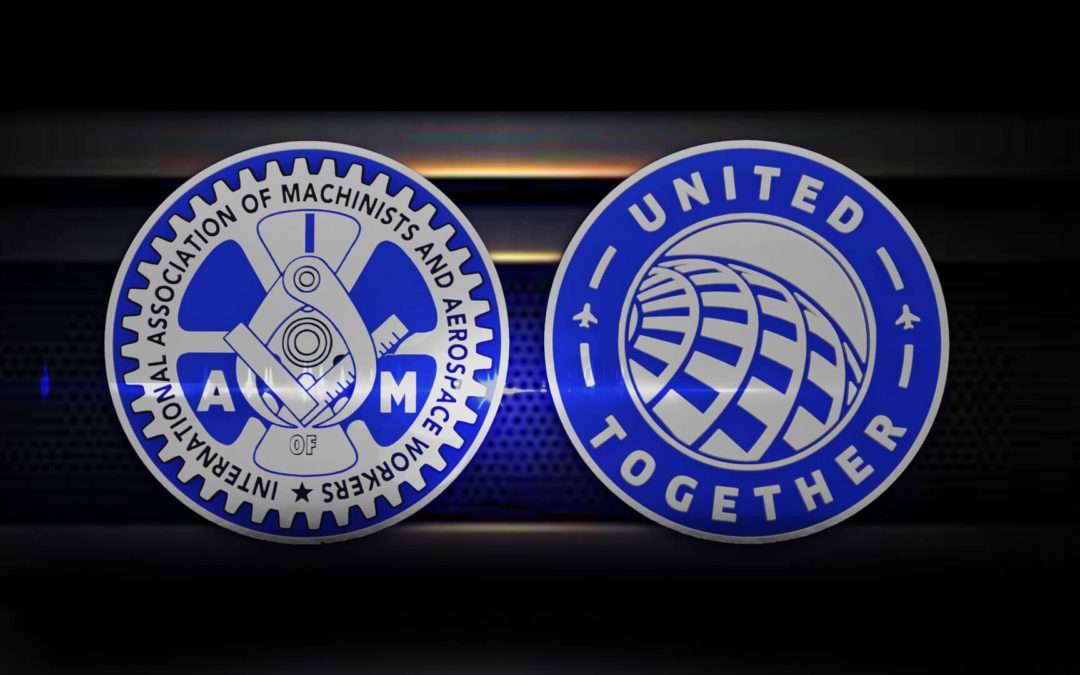
Machinist Union Members at United Begin Preparations for New Contract Talks
Machinist Union Members at United Begin Preparations for New Contract TalksUnion members at United Airlines, including nearly 29,000 workers over seven different workgroups, are preparing to start contract negotiations as soon as this summer, according to an...

Machinists Union Calls for Immediate Senate Action on Julie Su Nomination
Machinists Union Calls for Immediate Senate Action on Julie Su NominationThe International Association of Machinists and Aerospace Workers (IAM) is urging the U.S. Senate Health, Education, Labor, and Pensions (HELP) Committee to quickly confirm Julie Su as Secretary...
